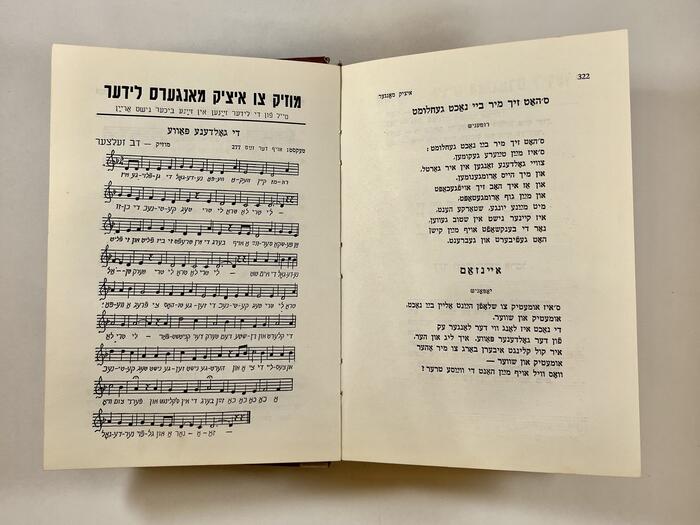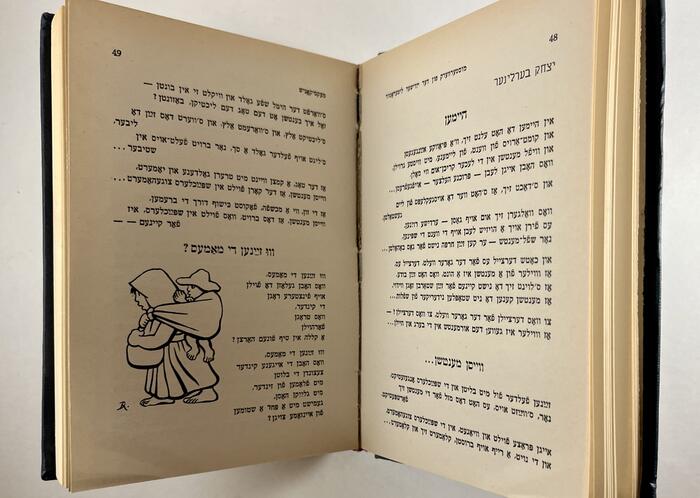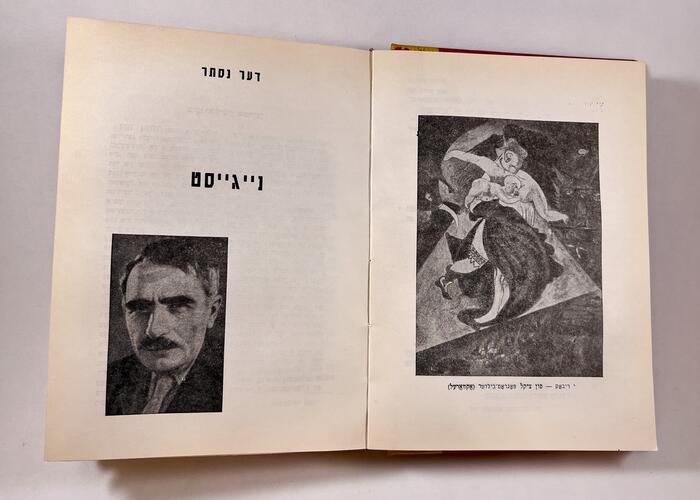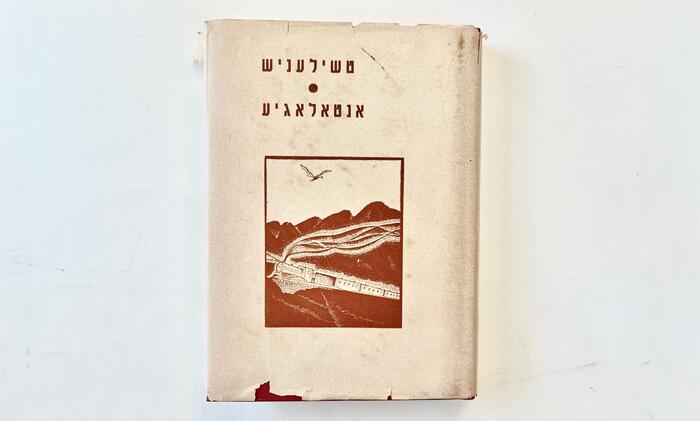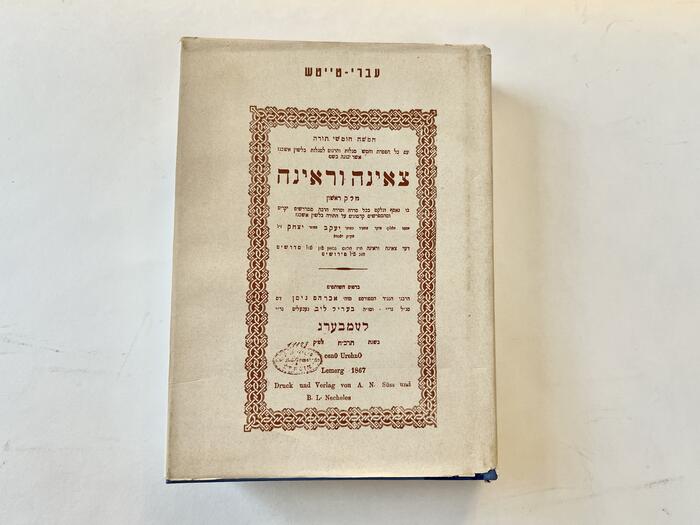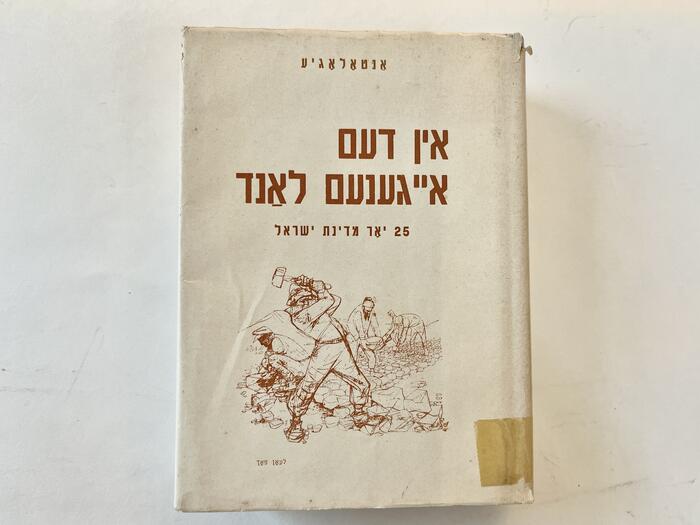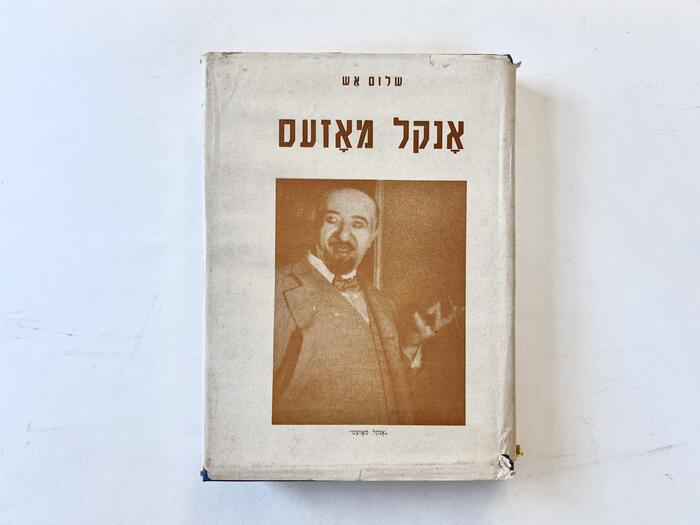Annotated Guide to the Musterverk Series
An Introductory Essay by Rachelle Grossman and a Guide to the Series
Which works of literature are so important that no school or home library would be complete without them? In Buenos Aires in the late 1950s, Shmuel Rollansky (Ro-ZHAN-sky) asked this question of Yiddish. It resulted in a remarkable book series: the 100-volume Musterverk fun der yidisher literatur (Masterworks of Yiddish Literature).
As the founding director of La Fundación IWO, the Argentinian branch of YIVO, and a prominent educator, series creator Shmuel Rollansky was acutely aware of the challenges facing Yiddish in the postwar period. In creating this series, he not only set out to make a vast corpus of Yiddish works widely available, but he also hoped to cultivate a new generation of readers who might otherwise assume Yiddish to be irrelevant or outdated.
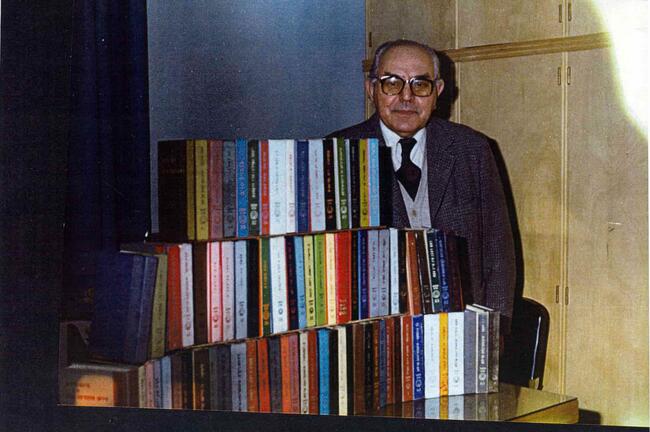
Published between 1957 and 1984, the series demonstrates the impressive breadth of Yiddish letters. Rollansky gathered and reprinted works of well-known Yiddish classics, including Sholem Aleichem, I. L. Peretz, Mendele, and Sholem Asch. In addition, he included works by his contemporaries who were actively publishing during the years of the series’ run, such as Avrom Sutzkever, Kadia Molodowsky, and Itsik Manger. He even included works of early Yiddish literature, like the Bove-bukh, a 16th century chivalric romance in Yiddish and the life writings of Glikl of Hamelin. Rollansky also insisted on expanding the canon of Yiddish letters to include the works of lesser-known writers, especially those from what many considered to be peripheral points on the Yiddishland map.
“It’s a mitsve to bring distant, near, and unknown communities to the eyes, mind, and spirit of the Yiddish reader in different places”
All told, according to Rollansky’s own reckoning, the Musterverk series features 925 writers over more than 31,000 pages. The volumes also include numerous reproductions of illustrations, photographs, and music, plus introductory notes and explanatory essays penned by some of the biggest names in contemporary Yiddish scholarship, such as Dov Sadan, Max Weinreich, and Nachmen Mayzel. Most remarkable—in my opinion—are his country-specific collections, which he called yishev-bikher, “community books.” Twelve in total, these anthologies speak to the unique qualities of Jewish life in far-flung corners of the world, including South Africa, Brazil, Chile, Canada, Uruguay, Mexico and Cuba, and, of course, Argentina. In some cases, these Musterverk volumes are the only known collections of Yiddish literature from these communities, and they serve as an important reference for anyone who wishes to expand their own conception of Yiddishland beyond the oft-studied centers in Europe and North America.
Yishev-bikher offer privileged glimpses into the experience of different Jewish communities, and they also emphasize the connective power of Yiddish culture and language to bind together Jewish people spread out around the world. “It’s a mitsve to bring distant, near, and unknown communities to the eyes, mind, and spirit of the Yiddish reader in different places,” wrote Rollansky about these special volumes. “As each gets to know the other, they’ll understand each other better, and they might begin to work together.”
Indeed, this collaborative spirit, coupled with the global character of Yiddish, is at the heart of the Musterverk series, and not only in its expansive content. Although it was created and published in Buenos Aires, the series was funded by Yosef Lifshitz, a wealthy diamond dealer in Johannesburg. His involvement was, according to Joseph Sherman, “a great source of pride to the few of us Yiddish scholars left here that South Africa was once a significant force in both the production and promotion of Yiddish culture.”
The series was undoubtedly a source of considerable pride for Rollansky as well. Among the subscribers who received new books four times a year were state and public libraries, universities, and synagogues, in addition to the thousands of students and casual readers who collected them for their shelves at home. Yiddish schools used them to introduce students to a universe of Yiddish culture and literature, as their accessible format (made up mainly of short pieces) and inviting thematic spread made them ideal for the classroom then and now. Anthologies especially suited to this purpose include Yidish in lid, a collection of poems in Yiddish about Yiddish; Dos kind in yidisher poezye un proze, Yiddish works about children; and Di yontefdike teg, a collection of poetry and prose about Jewish holidays.
All of this—wrote Rollansky in more than one of his introductory essays—was accomplished in “vaytn” (“faraway”) Argentina. Unlike New York, which had long been considered a center of Yiddish culture, Buenos Aires had a fraught relationship to the rest of the Yiddish world, complicated by its physical distance from Europe and North America. Although a vibrant local Yiddish culture developed in Argentina throughout the first half of the 20th century, it was not until the postwar period that Buenos Aires emerged as a major center for Yiddish globally, buoyed by the success of large series such as Dos poylishe yidentum (Polish Jewry 1946–1966) and a new edition of Peretz’s collected works by Farlag “Idisch” (1944). Rollansky built on this momentum in creating the Musterverk series, which firmly established this silver age for Yiddish publishing.
The Musterverk series presents a vibrant civilization, an expansive Yiddishland in both the scope of the literature included and in the great many locations of its readers. In partnership with our colleagues at La Fundación IWO Instituto Judío de Investigación in Buenos Aires, the Yiddish Book Center is delighted to be able to add the Musterverk fun der yidisher literatur to the Steven Spielberg Digital Yiddish Library. In doing so, we continue Rollansky’s mission to make this literature accessible to as many people as possible and hope, as he did, that it will be a source of enjoyment, inspiration, and renewed creativity.
In 1985, IWO Buenos Aires published the reference work Shlisl tsu di 100 bend “Musterverk” (key to the 100 Musterverk volumes). This excellent guide, compiled by Shoshana Balaban-Wolkovicz, lists each author alphabetically by last name and indicates the volume and page numbers where their works can be found. An index of music and images is also included.

